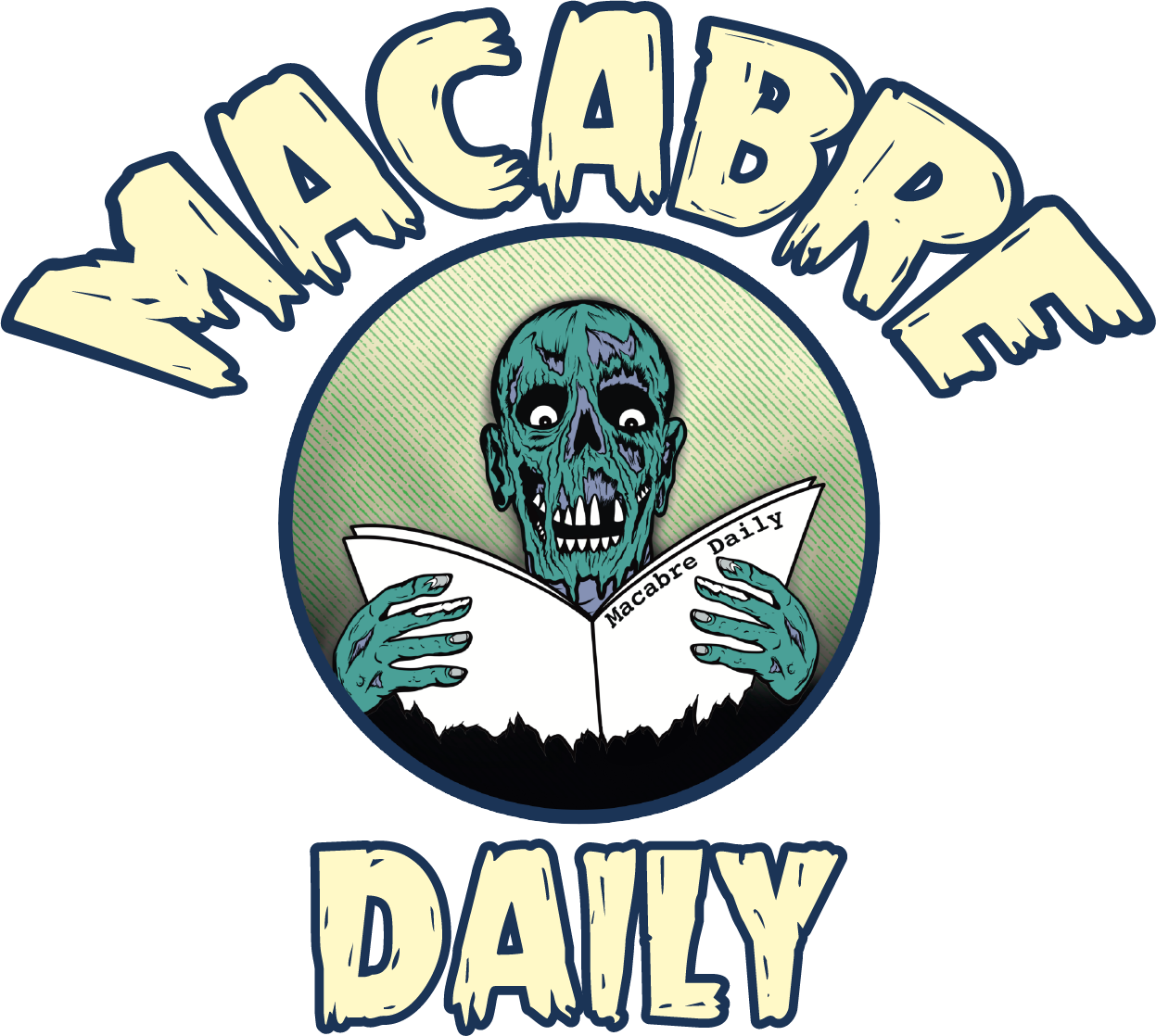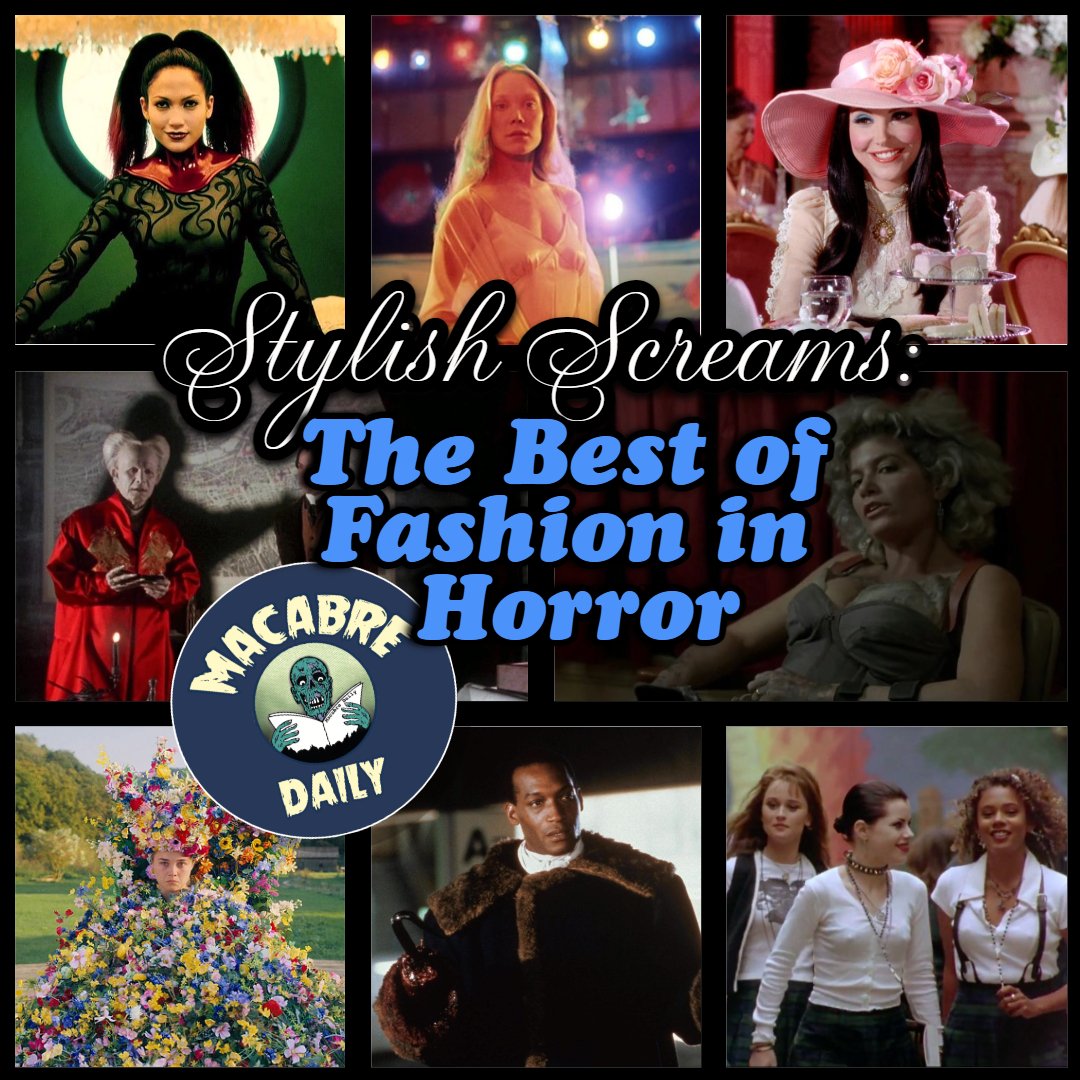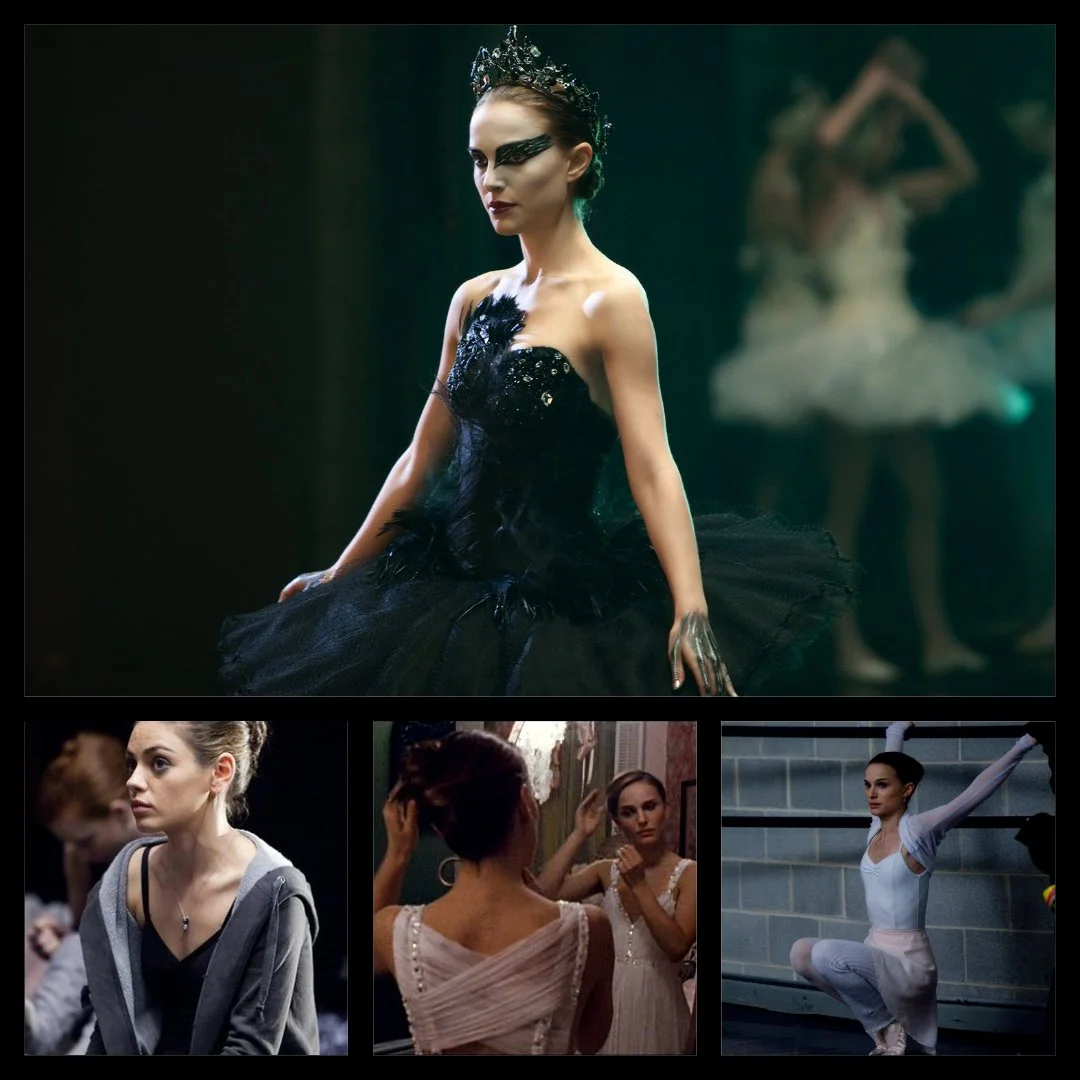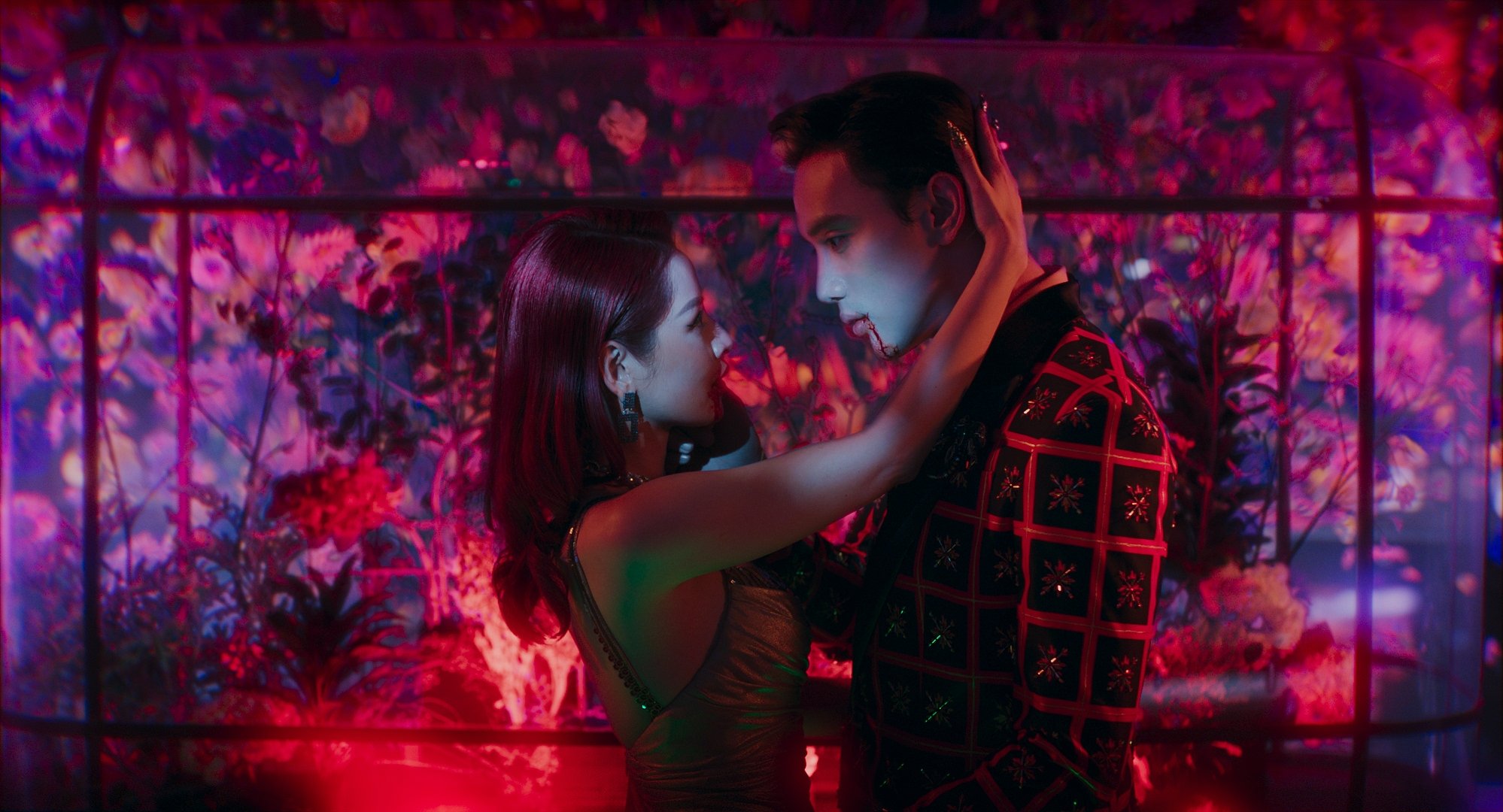STYLISH SCREAMS: THE BEST OF FASHION IN HORROR
In the realm of storytelling, fashion is a powerful tool that can evoke emotions, create atmosphere, and shape characters. In the genre of horror, fashion takes on a sinister and unsettling dimension, amplifying the fear and suspense. The best fashions in horror see costume designers using clothes and visual style to enhance the storytelling and create a truly immersive experience for the audience. From iconic looks that have become synonymous with the genre to subtle sartorial choices that contribute to the overall atmosphere, fashion is an integral part of the horror movie experience, leaving an indelible mark on not only the genre, but the world of fashion in general.
BLACK SWAN (2010, Costume Design: Kate and Laura Mulleavy)
While running the lauded fashion house of Rodarte, designers Kate and Laura Mulleavy were recommended to director Darren Aronofsky by Natalie Portman herself. Citing such cinematic influences in their work as THE THIN MAN, the STAR WARS films, and yep, even HELLRAISER, they crafted pieces that would lend themselves to the movement required by the dancers, but would also work in emphasizing Aronofsky’s body-horror tale of perfection and obsession, and Nina’s descent into madness. Balletcore is having a renaissance right now, and there is plenty of inspiration to be had from BLACK SWAN.
CANDYMAN (1992 & 2021, Costume Design: Leonard Pollack (1992) and Lizzie Cook (2021)
For Bernard Rose’s CANDYMAN (1992) Tony Todd worked with makeup designer Bob Keen on the Candyman's look, crafting a costume that is at turns, menacing, modern, and timeless, a ghost that stands out as decidedly chic, amongst the usual Victorian specters seen in most ghost story films. That continued to Nia DiCosta’s 2021 remake, with colorful and effortless cool fashions crafted by Lizzie Cook, whose credits also include 8 MILE and EMPIRE. The designs of both reflect the urban landscapes that are at the heart of the supernatural tales, with 1992’s overall aesthetic being grittier and muted in its palette, and 2021’s being decidedly more colorful, reflecting a more modern streetwear sensibility.
CARRIE (1976, Costume Design: Rosanna Norton)
Costume designer Rosanna Norton knew that the stark effectiveness of her blood-spattered gown, set off by the blank-slate design, would be memorable. In CARRIE, the fashion isn't quite so outré compared to other films on this list, but it captures the moment and demarcates the social differences between shy, troubled Carrie White (Sissy Spacek) and her peers. Her classmates all wear bell bottom jeans, flowing skirts, short shorts and halter tops. They're all casually dressed and ultra-'70s in their style. Carrie, on the other hand, looks like she could've come from the '50s, with her cardigans and commitment to modesty (likely at the requirement of her tyrannical mother). Carrie sews, and it's telling that the dress she makes herself for the horribly fated prom night is a pale, classically pretty, but more revealing than usual slip dress. It’s a dress, to her, that holds a world of possibility. It could be the dress that finally frees her, that lets her feel confident, lets her feel normal, and dare I say, feel sexy. She may still be shy but in this iconic, terrifying denouement, she’s wearing what she wants for perhaps the very first time. Once she is bathed in that huge swath of pig's blood, the entire tone and context of the dress changes, as Carrie becomes a raging one-woman pogram, all scarlet vengeance and id, and terrifying, iconic, malevolence.
CRIMSON PEAK (2015, Costume Design: Kate Hawley)
Plucked from the world of theater and opera costume design in her native New Zealand, Kate Hawley was hired personally by Guillermo del Toro for his Victorian-era Gothic romance/ghost story. Del Toro loves symbolism, especially color-coding, and that’s reflected in the costumes for “Crimson Peak.” The heroine, American heiress Edith Cushing (Mia Wasikowska), is often seen in gold, representing wealth — and also, as Hawley put it, “a canary in a coal mine.” In contrast, Lucille (Jessica Chastain) is often seen in cool colors, the moth to Edith’s butterfly. The looks ooze an opulent, yet maudlin gothic feel, reflecting the siblings former high-society status, now fallen into twisted disrepair.
BRAM STOKER’S DRACULA (1992, Costume Design: Eiko Ishioka)
At the start of the production, Francis Ford Coppola declared, “The costumes will be the set,” making the unusual decision to put the bulk of his budget towards costume design. He wanted them to be visually exciting set pieces, and set the film’s atmosphere and believed Ishioka could achieve this. Although she only had two costume credits and a handful of production design credits, Coppola knew her distinct creative style was what the film needed. This collaboration resulted in animalistic features to the characters, and a distinctive East-meets-West look for the film. For her Dracula, Ishioka wanted it to feel like he was continually transforming. So, she didn’t make a one-costume-fits-all that previous adaptations had adopted. Instead, she created seven distinct costumes to create a visually stunning story for Dracula, taking inspiration from the artwork of Gustav Klimt, Japanese kimonos, and the animal world (wolves in particular), securing herself an Oscar win for her incredible efforts.
HELLRAISER (1987, Costume Design: Joanna Johnston)
Bringing the underground kink culture to the masses, Clive Barker originally took inspiration from African fetish sculptures, especially when it came to Pinhead's appearance. He also drew from his experience visiting S&M clubs from different parts of the world, including in Amsterdam and New York, as well as punk fashion and Catholicism. Collaborating with his design team, including Johnston, who would go on to be nominated for an Oscar for her designs for ALLIED and LINCOLN, he brought his nightmarish, leather-clad hell priests to the world, their looks influencing the world of both music, film, and even drag culture. Who could forget Gottmik’s cenobite finale look for RuPaul’s Drag Race? (fun fact: they even auditioned for the Pinhead role for the 2021 HELLRAISER remake).
JENNIFER’S BODY (2009, Costume Design: Katia Stano)
Writer and director Diablo Cody explained to costume designer Katia Stano that JENNIFER’s BODY wasn’t just about horror, but also about the death of friendship and how horrible that is to face as a teenager, versus the sunshine and rainbows of still being a kid. This juxtaposition informed much of the design of the characters costumes, with Stano putting the cheerleader-turned-succubus character of Jennifer into candy-colored mini skirts and cropped cardigans, instead of the more typical goth clothing one might expect. And it worked, because JENNIFER’S BODY continues to inspire countless Halloween costumes and horror-themed cosplay, and a even a few clothing brands have made replicas of Jennifer’s best looks, including a particular pink, heart-printed hoodie that was copied by Dolls Kill, Shein, and smaller clothing brands, like Fine and Underground Costumes.
A LIZARD IN A WOMAN’S SKIN (1971, Costume Design: Maurizio Chiari)
One of Lucio Fulci’s earliest giallo/thriller works, A LIZARD IN A WOMAN’S SKIN is a snapshot of early 70’s style, featuring chic statement hats, luxurious furs, and lots of skin and glam galore. It’s a movie of style over substance, but it features a great twist that makes all the weird visuals and trippy imagery worth it. It is gorgeously shot, particularly the dream sequences. Fulci's anti-hippie, gay panic London town murder mystery is a psychedelic funhouse labyrinth of snap zooms, jump cuts, swish pans, split screens, split dogs, belfry bats and fashionable 70’s fashions that feel timeless even today.
THE LOVE WITCH (2016, Costume Design: Anna Biller)
Biller, who wrote, directed, and edited the movie, was also the production designer and costumer for this sexy and ultra-stylish film about a witch who kills her paramores. Biller did all of the sewing and was self-taught, with her mother being a fashion designer herself, so Biller grew up surrounded by plenty of inspiration. Taking some of its cues from the school of Russ Meyer-style exploitation films, the film itself dives into ideas of love, sex, and gender, and the film’s costumes reflect Elaine’s journey through those ideas, full of gauzy fabrics, vintage Gunne Sax dresses, and plenty of fabulous vintage patterns. THE LOVE WITCH does retro style so very right, taking the best of 70’s era feminist fashions and makeup and bringing them to the modern masses. Sometimes if it ain’t broke, don’t fix it.
MIDSOMMAR (2019, Costume Design: Andrea Flesch)
The sunny fields, group meals, enormous Maypoles, and most eerily, everyone’s bright, embroidered white costumes add up to the unsettling feeling that something's off about this seemingly idyllic Swedish community. Between hand-embroidered runes, coded colors, and historic research, designer Andrea Flesch had her work cut out for her. However, her biggest wealth of materials came from a decidedly un-Swedish country: Hungary, which was also where MIDSOMMAR was shot. Since it was difficult for Flesch to also procure the materials she needed in Sweden, Hungary turned out to be a gold mine. She was able to arm herself with a ton of 100-year-old linen fabric and embroidery to hand-craft the Harga costumes, careful to make the clothing look handmade, starting white, with more and more color being introduced as the events of the film unfold, all leading to that now-iconic, flower-laden dress.
NEAR DARK (1987, Costume Design: Joseph A. Porro)
Rather than portraying the central blood-suckers as proper Transylvanians with capes and fangs, Director Kathyrn Bigelow renders the vampire as a rural nomadic figure more akin to a post-apocalyptic flick than most traditional blood-sucking fare. Through Bigelow and co-writer Eric Red’s singular conception of the vampires as undead Southern Gothic punks, NEAR DARK both humanizes the monstrous by making the vampiric plight more grounded in a lived-in reality and renders normative humanness as a destructive force through the film’s depiction of small-town life. Rather than depicting the central vampires as wealthy aristocrats like Dracula or grotesque isolated figures like Nosferatu, NEAR DARK renders the vampire as a working-class community of outcasts on the fringes of normative society. These vampires have an effortless rocker coolness to them, while simultaneously being cold-blooded, stylishly-lethal killing machines.
THE NEON DEMON (2016, Costume Design: Erin Benach)
In order to bring the high-gloss modeling world of THE NEON DEMON to screen, director Nicolas Winding Refn enlisted costume designer Erin Benach, who also worked with him on DRIVE in 2011. Their goal was to develop a world where the high fashion moments truly were as high fashion and editorial as possible. To help accomplish that, Benach reached out to Armani and Saint Laurent, having been inspired by the latter’s glamorous and grungy Spring 2015 campaign, bringing a hard-edge 70’s and 80’s style to the film, and working backwards to find Jesse’s (Elle Fanning) more innocent beginnings with long, loose-fitting Ulla Johnson dresses. Benach’s design vision gave a slick, dark sheen to the aesthetic of the film, contrasting the beauty that disguises the ugliness underneath.
THE CELL (2000, Costume Design: Eiko Ishioka and April Napier)
THE CELL represents a collaborative effort of costume design more significantly than the typical film project. The two credited designers, Eiko Ishioka and April Napier, match the two modes of visual storytelling and realities the movie moves within. As the movie largely takes place in the dreamscape of a serial killer, the costumes had to clue the audience into the neuroses that later manifest, while also providing clear delineation from one dimension to another. There’s plenty of religious imagery, sci-fi psychedelia, fetish culture, as well as horror and traditional Japanese influences, including H.R. Giger, as well as the avant garde fashions of Thierry Mugler, Jean Paul Gautier, and Issey Miyake. The result is a stunning and sweeping nightmare of a film, in turns both unsettling and gorgeous to behold.
THE CRAFT (1996, Costume Design: Deborah Everton)
Still as relevant as it was in 1996, much of THE CRAFT’S lasting appeal can be credited to its timeless cult wardrobe. From Nancy’s (Fairuza Balk) PVC coat, dog collar, crucifix and rosary combination to Rochelle’s (Rachel True) tartan skirt, white polo shirt and braces look, there’s one woman to thank – costume designer Deborah Everton. Everton got her break on James Cameron’s 1989 blockbuster, THE ABYSS and met and befriended a young director on set named Andrew Fleming, who reached out to her to design the wardrobes for the teen witches. Everton loosely drew on the assigned elementals for each girl, incorporating the characters of the girls as well as their transformations into their looks. For Nancy, who is perhaps the most damaged and unpredictable character in the film, she made the clothes like her armor “Let me do the rejecting,” said Everton about the character's look. “Before I’m rejected!” In the case of Bonnie’s (Neve Campbell) look, she’s first seen in oversized jackets and sweaters, her hair a curtain around her face, until her burn scars are taken away, and she waltzes into the classroom, hair swept up and in a figure-hugging outfit. As the girls gain confidence in their powers, their clothes reflect their newfound sense of power. The looks created for the film became the ultimate alt-girl wardrobe that would define a decade.
THE HUNGER (1983, Costume Design: Milena Canonero)
Oscar-winning costume designer Milena Canonero (BARRY LYNDON, MARIE ANTOINETTE) envisioned the chic looks of THE HUNGER through the lens of the quintessential 80s silhouette (padded shoulders & small waist), exploring gothic influences as well, mixing leather, fishnets, and sheer black fabric to create daring, yet fashionable suits and dresses. Many of Miriam’s (Catherine Deneuve) looks were created by fashion house Yves Saint Laurent, featuring lace veils, hats that provide a shadowed silhouette, and classically tailored suits that emphasize Miriam’s literal timelessness. As Miriam's partner John (David Bowie) has just the right measure of androgynous loveliness and vampire-like danger. In contrast to Miriam and John, Susan Sarandon, as Sarah Roberts, is the lab-coated professional with the playful semi-punk hair. A dedicated doctor studying the aging process, she's a professional by day, but with a hint of a naughty streak by night. The looks reflect the timeless and effortlessly cool style of these immortal creatures, with the right amount of gothic sensibility that gives an edginess and danger to them. Being undead never looked so good.
Stay up to date with “The Dark Side Of Pop Culture” by following Macabre Daily on Instagram, Facebook, and Twitter.


























